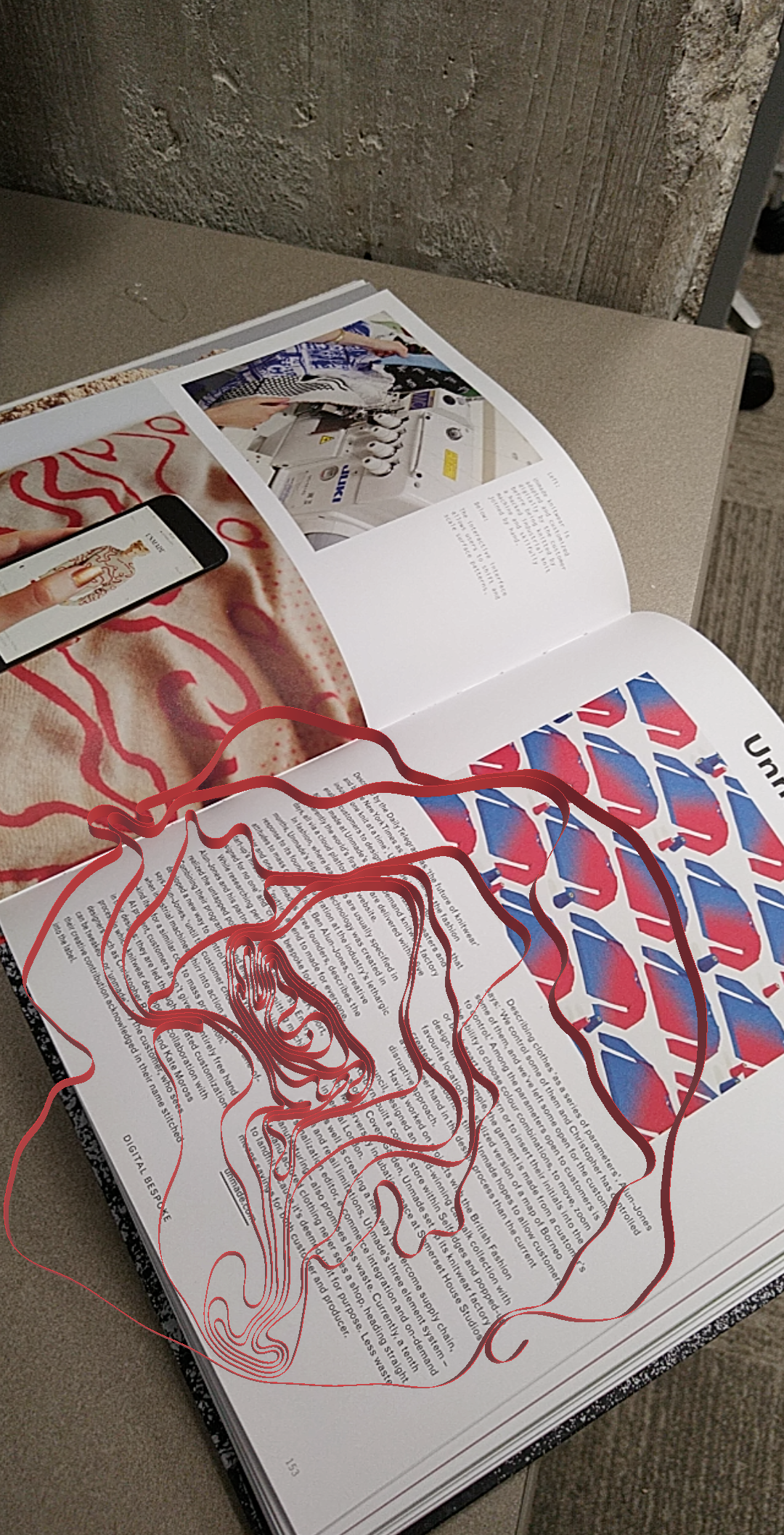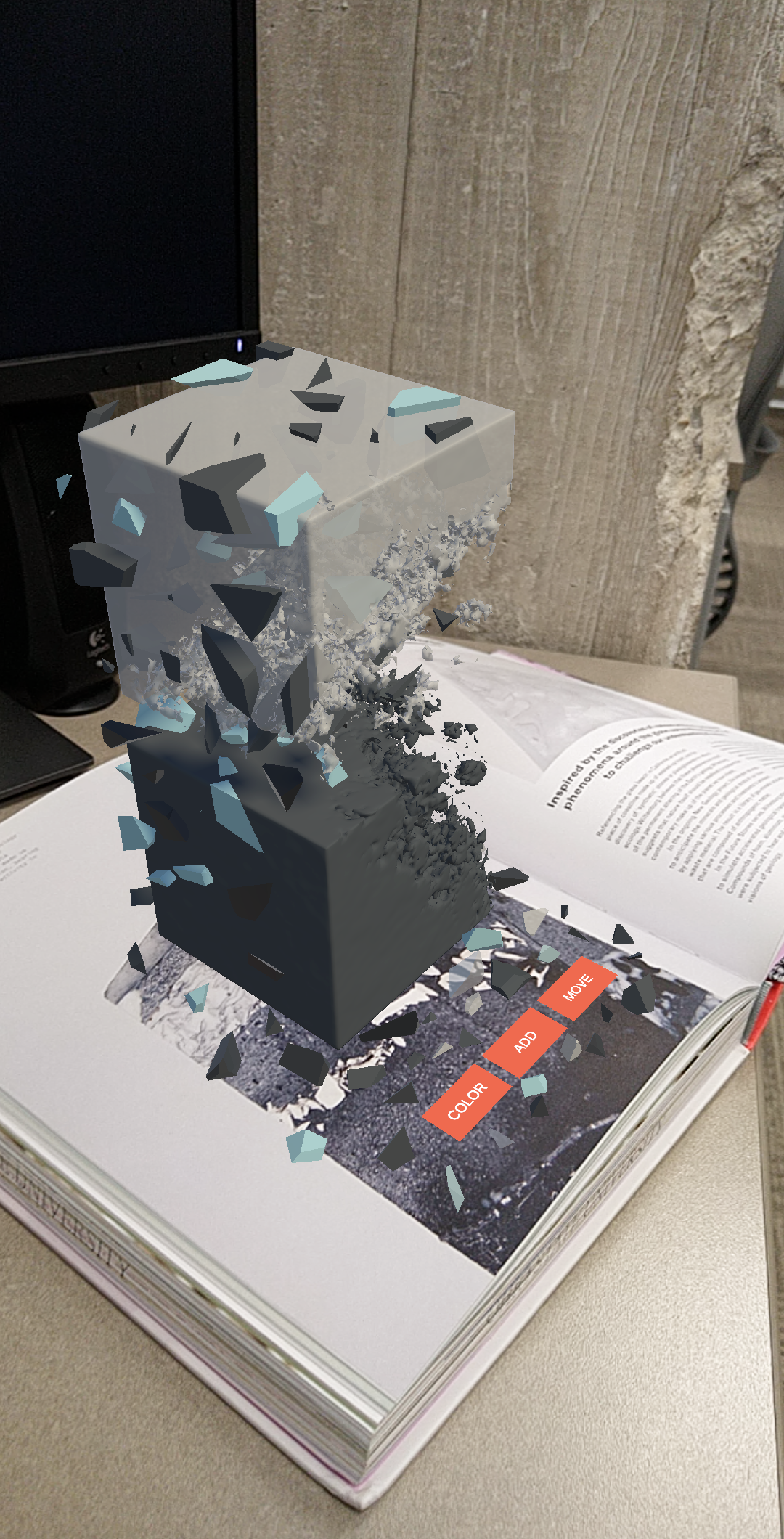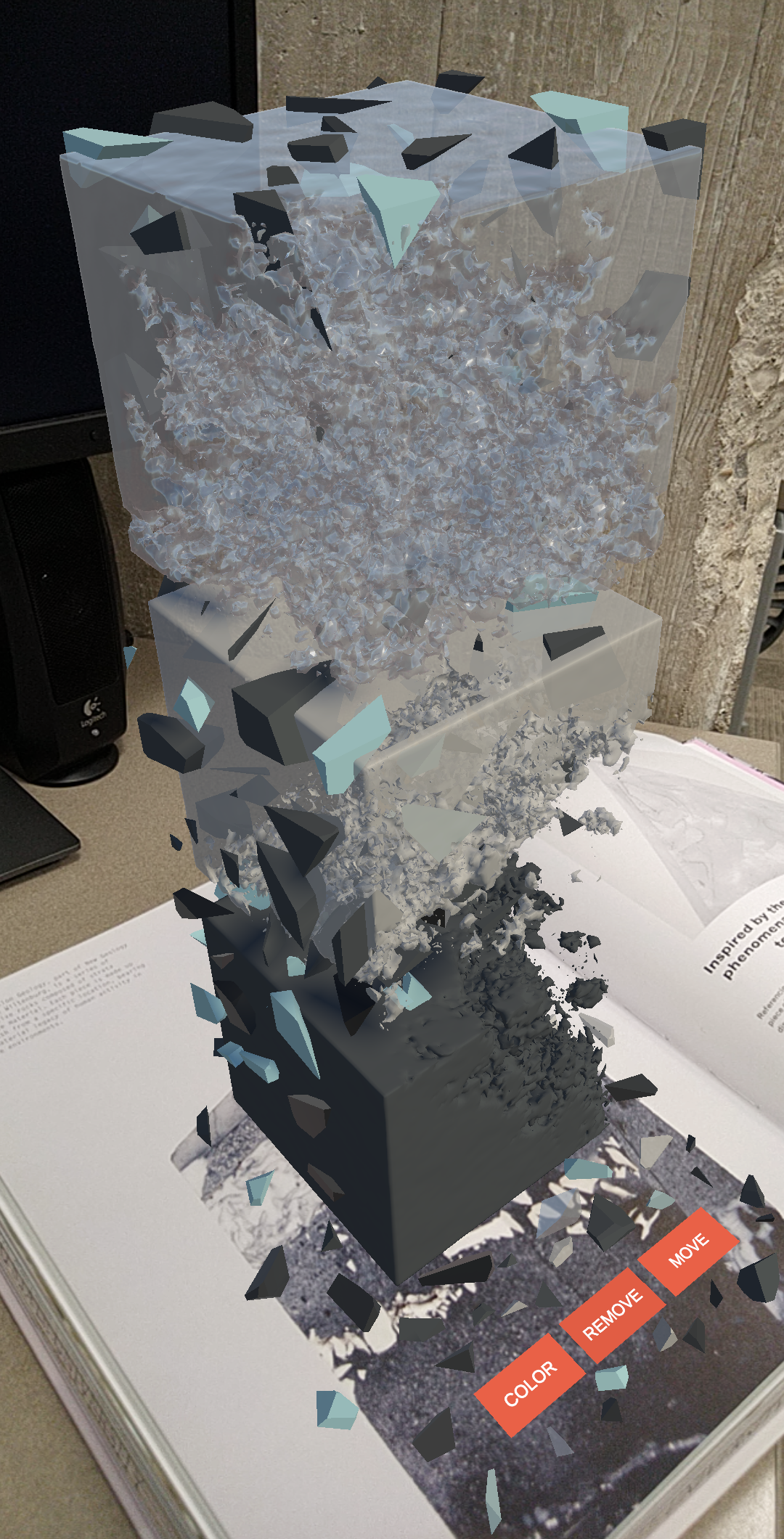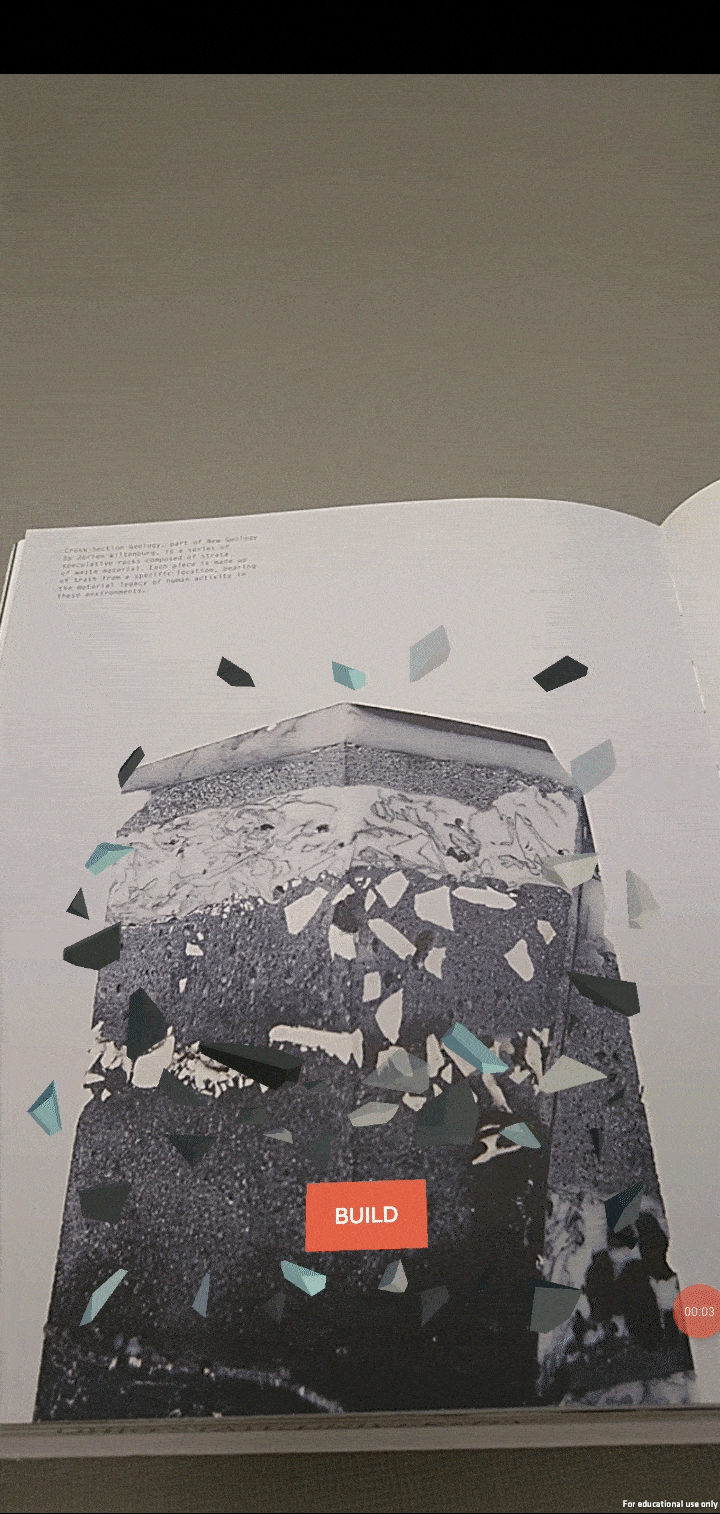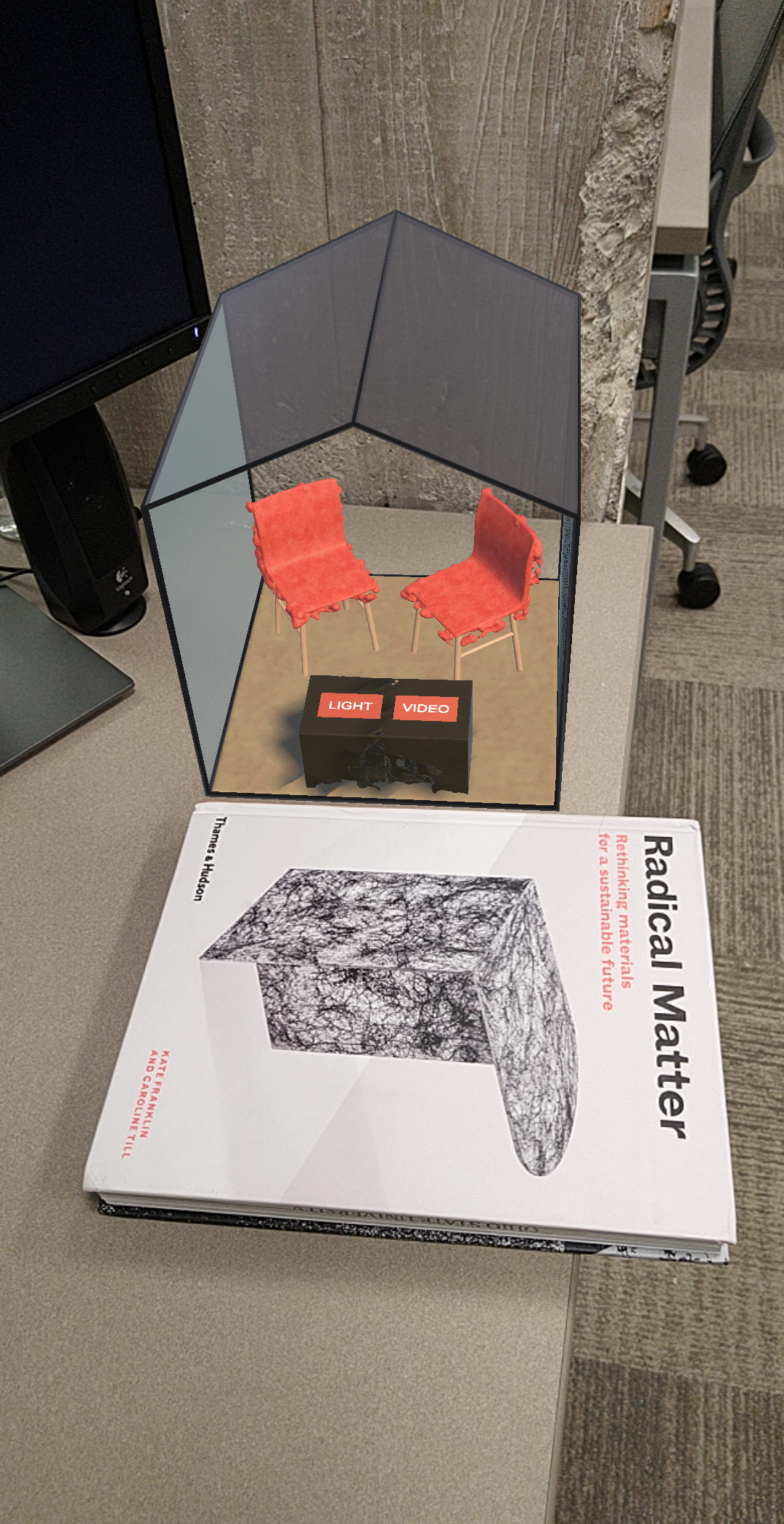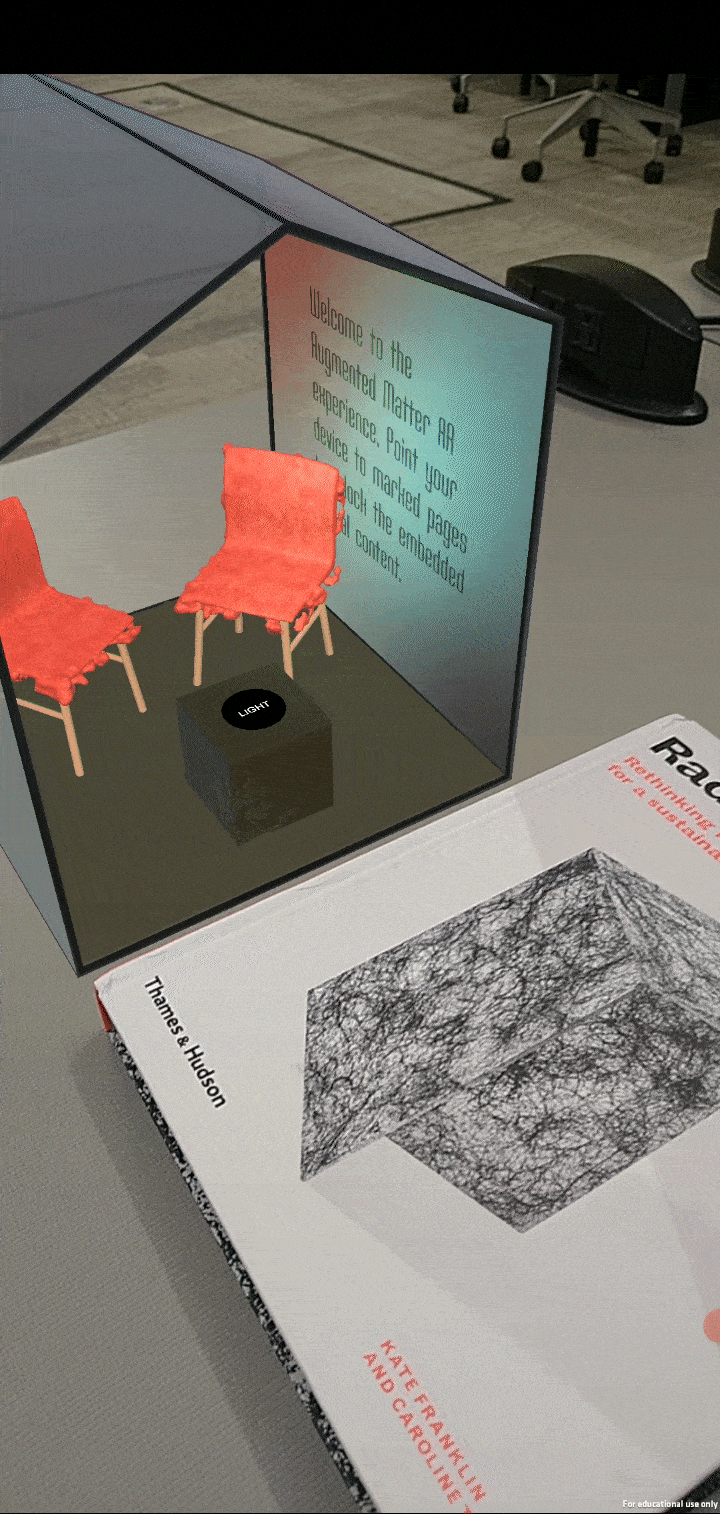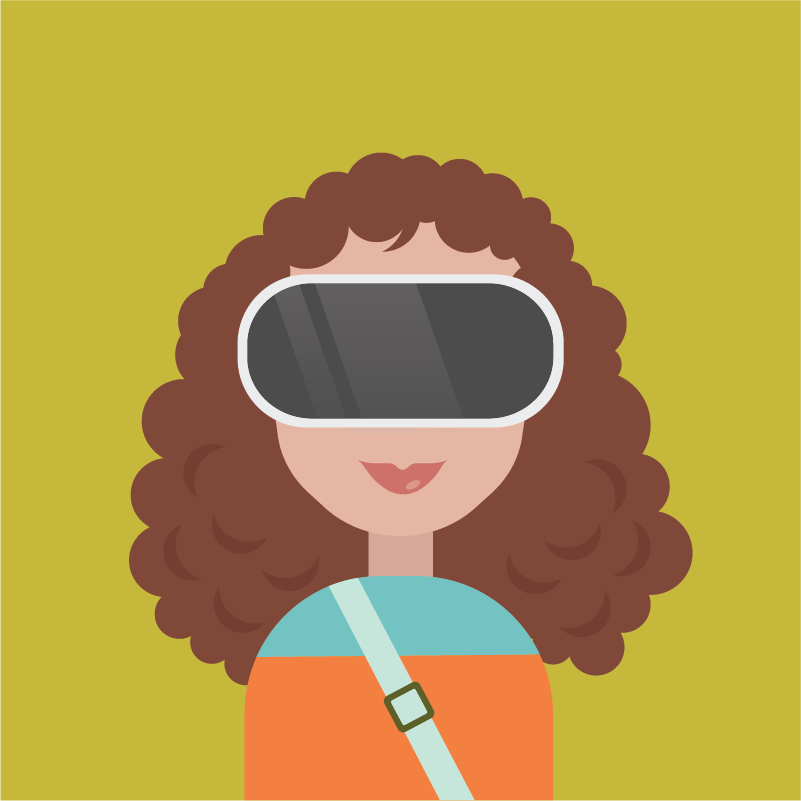Timeframe: January 2022 - March 2022 | Role: AR Developer + UX Designer
The goal of this project was to explore the use of augmented reality (AR) in turning static book pages into an interactive and enhanced reading experience, as research has demonstrated that traditional learning experiences could benefit from innovative technologies like AR to improve engagement with materials. I used Unity and Vuforia Engine to create an AR application by adding 3D models made in Cinema 4D and Maya, as well as world-space buttons, animations, videos, and interactions through touch-based input. This project was created in the Designing Immersive Virtual Environments graduate studio class and the book I chose to work with was Radical Matter: Rethinking Materials for a Sustainable Future by Kate Franklin and Caroline Till. I focused on visualizing the innovative approach to materials discussed in the book by using 3D models and interactivity, as my own interest in physical materials sparked when I started to do 3D art and design. I created 3D visualizations of the page contents with the goal of getting readers inspired by the mix of mediums, as well as having a more dynamic reading experience by being able to physically interact with the content.
In-progress documentation, wireframes, and sketches:
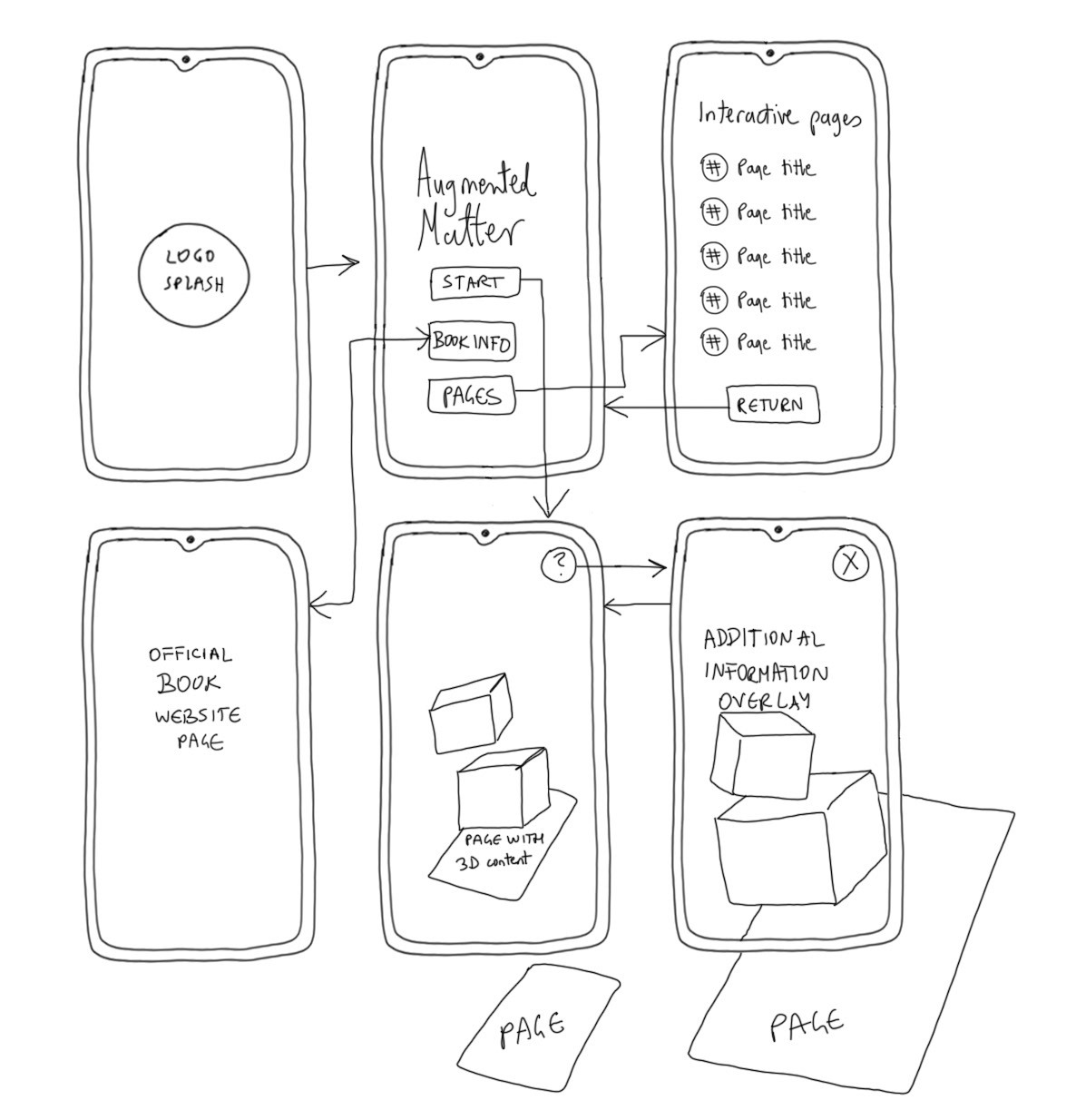
App wireframe
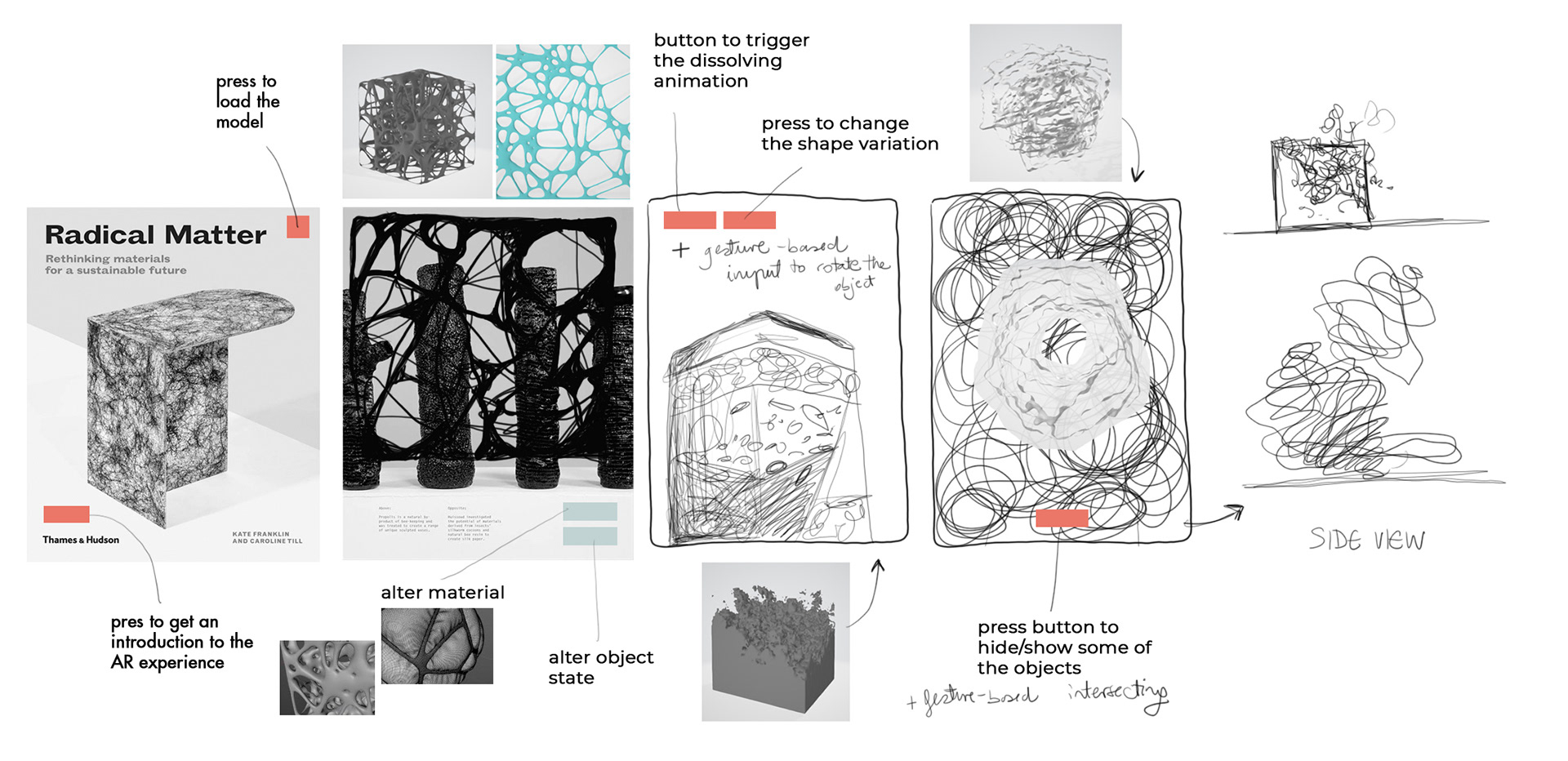
Sketches
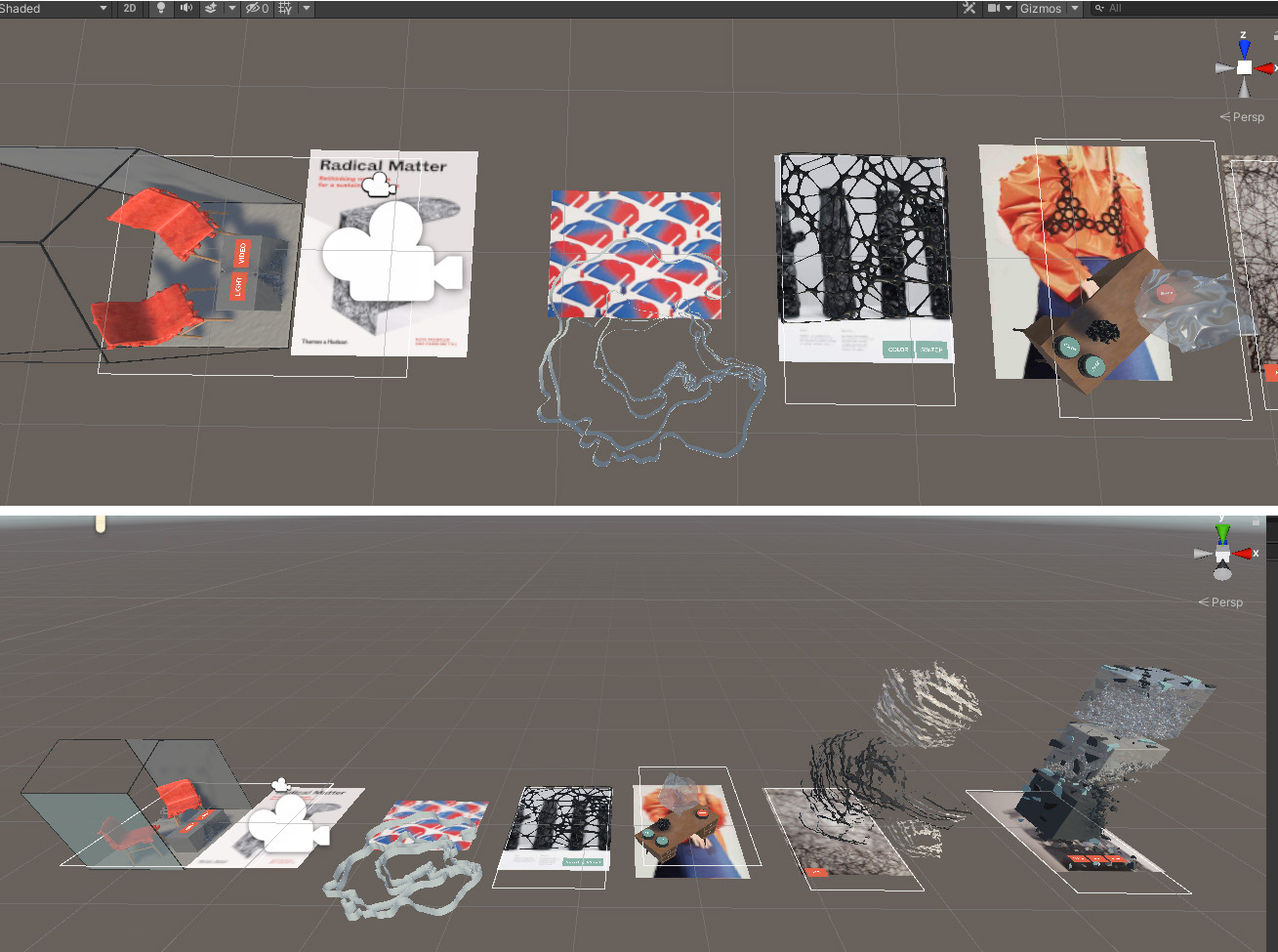
In-progress scene in Unity
AR screenshots taken inside the app:
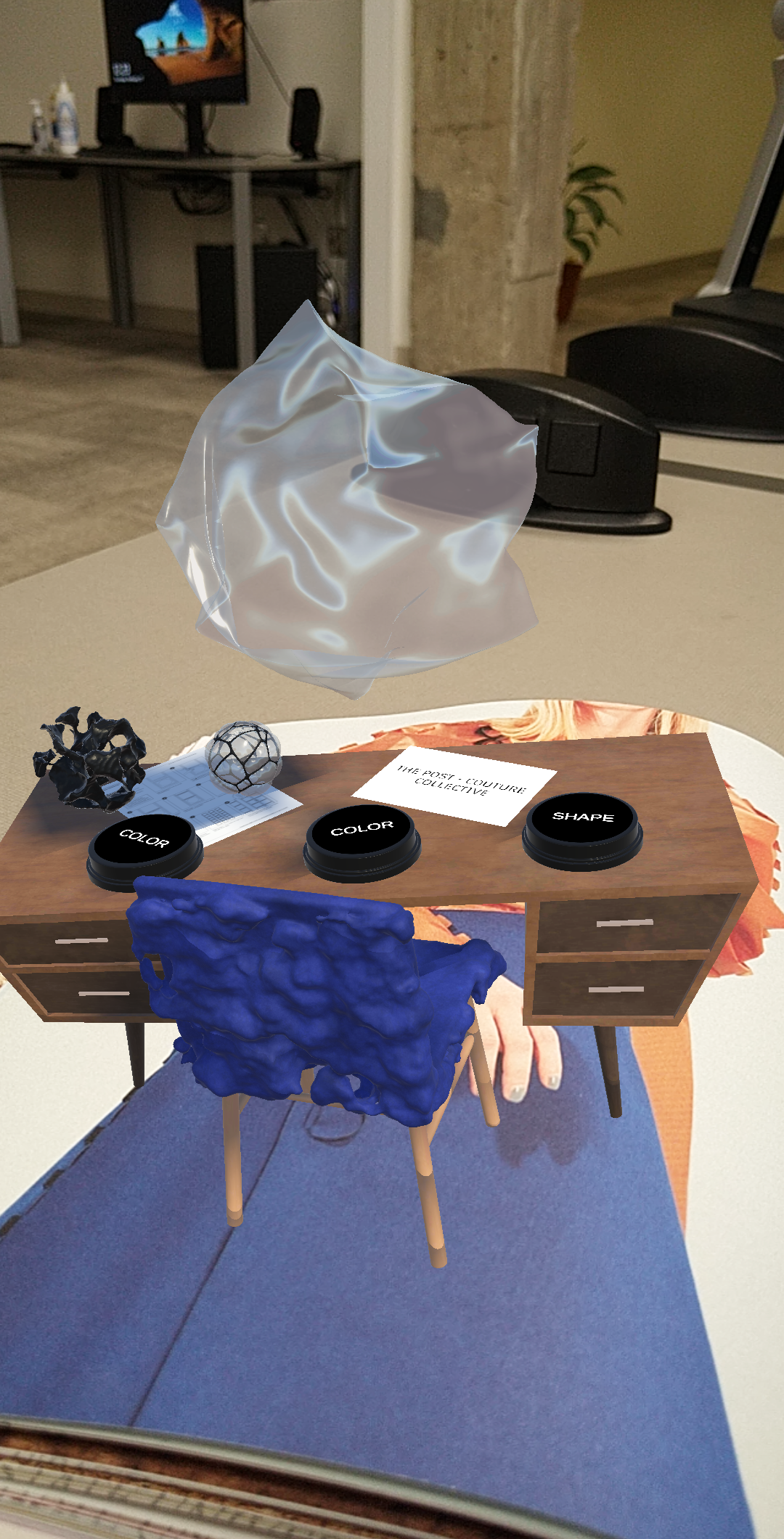
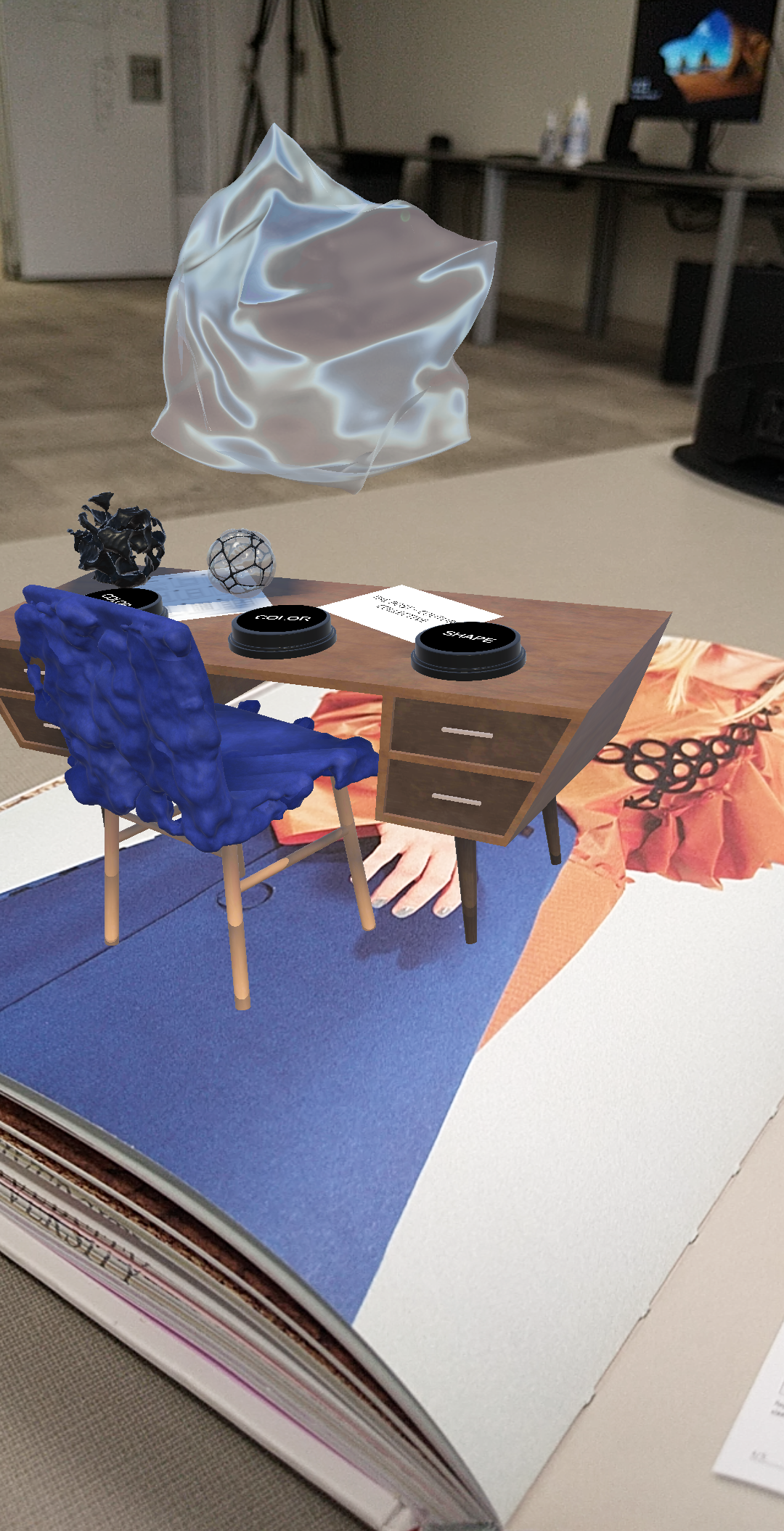
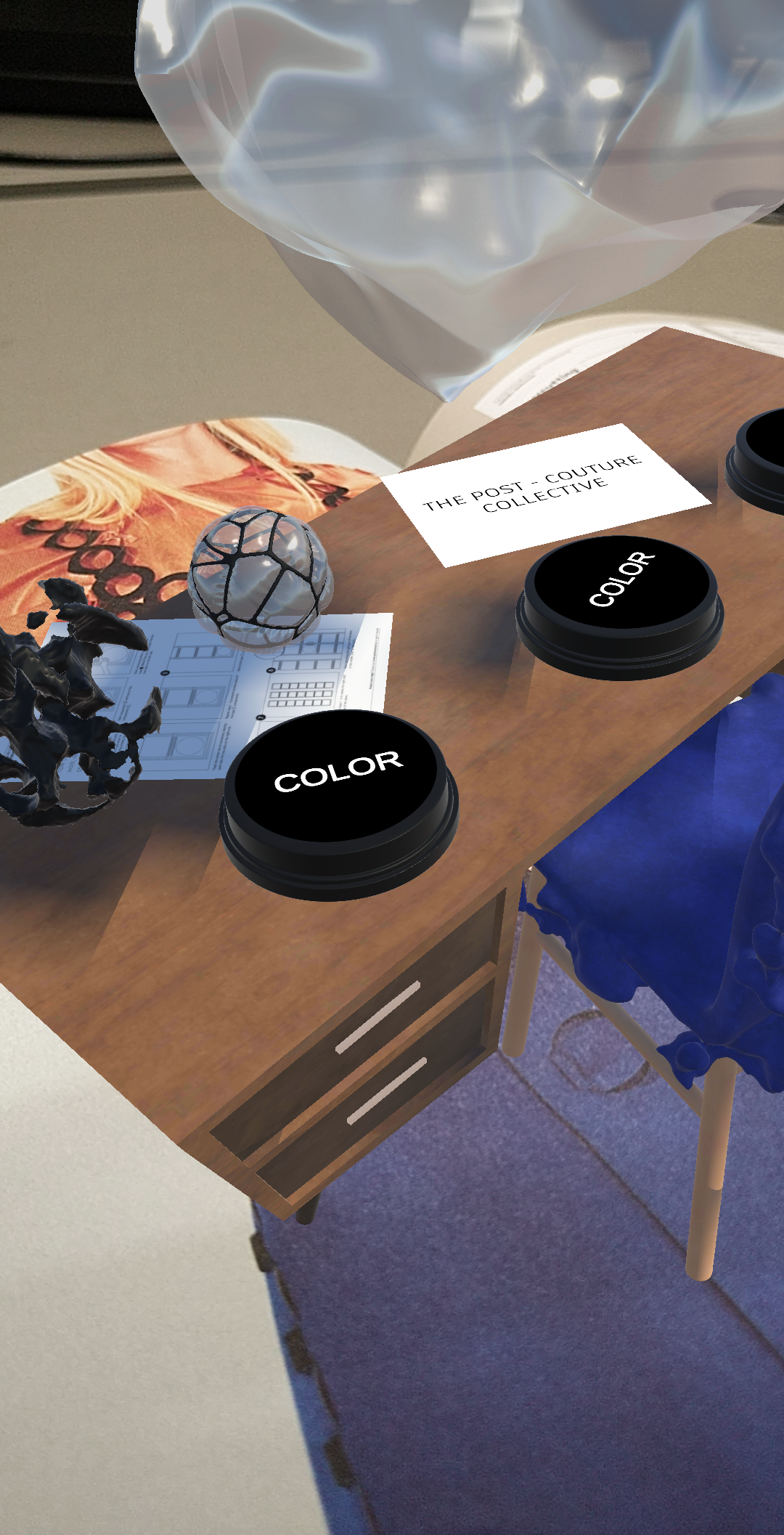
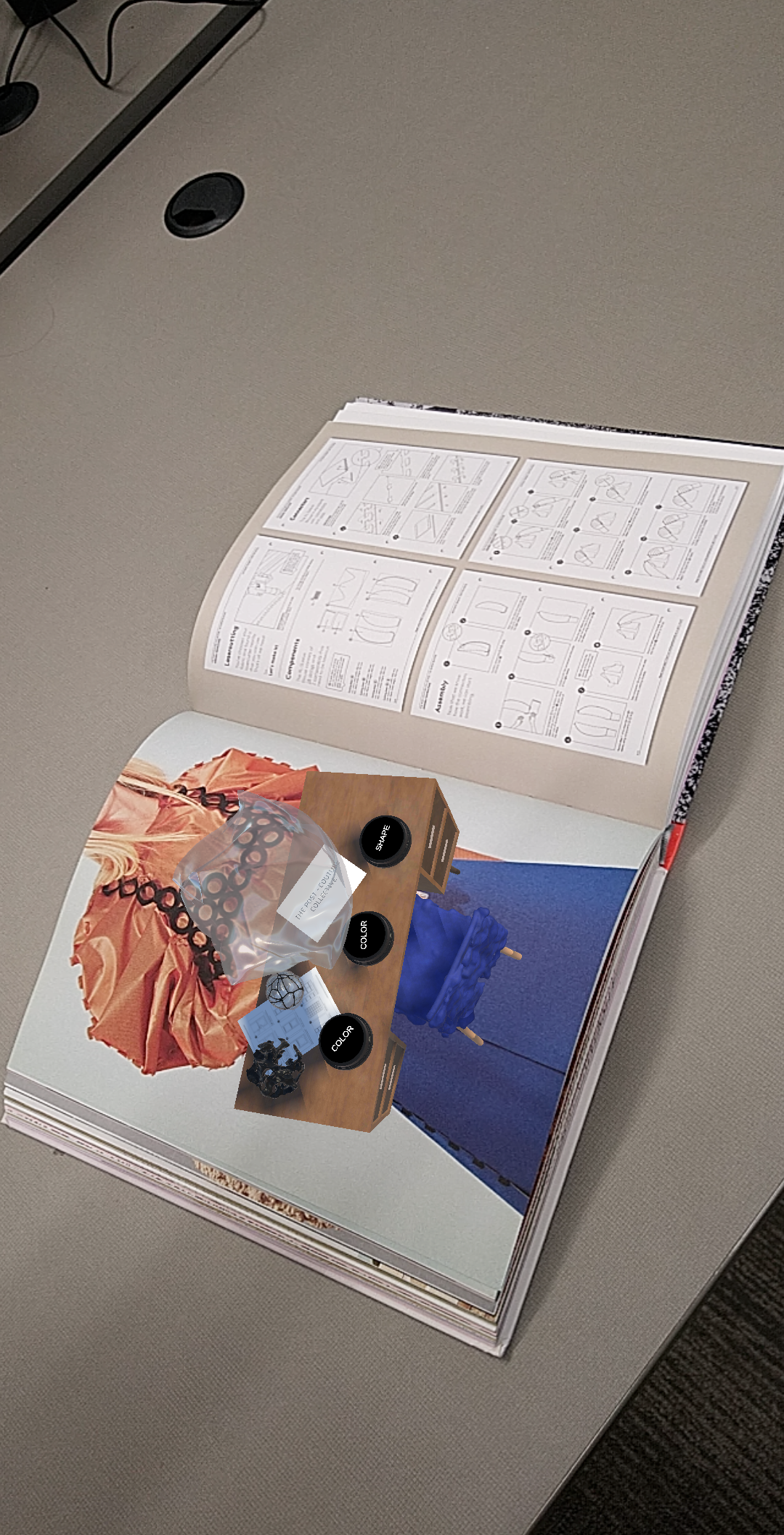
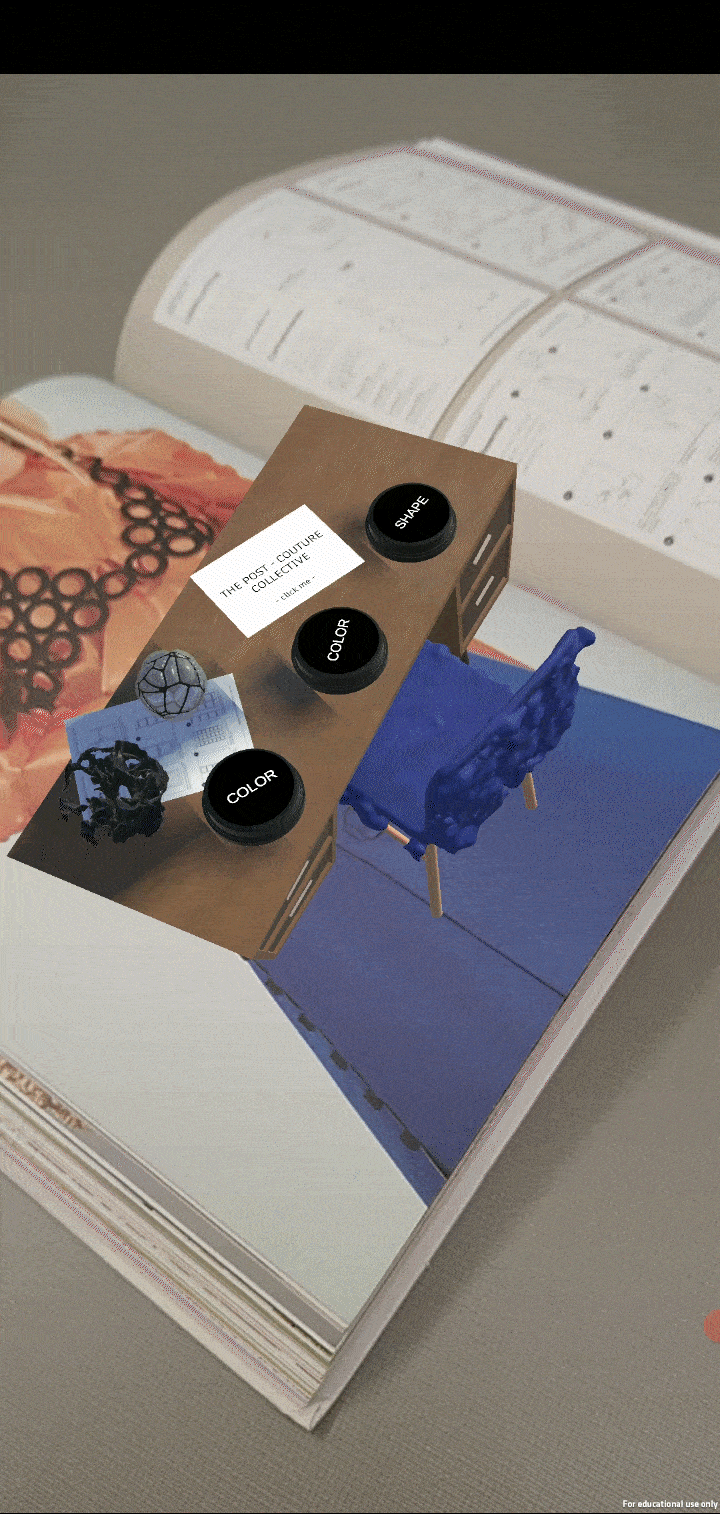
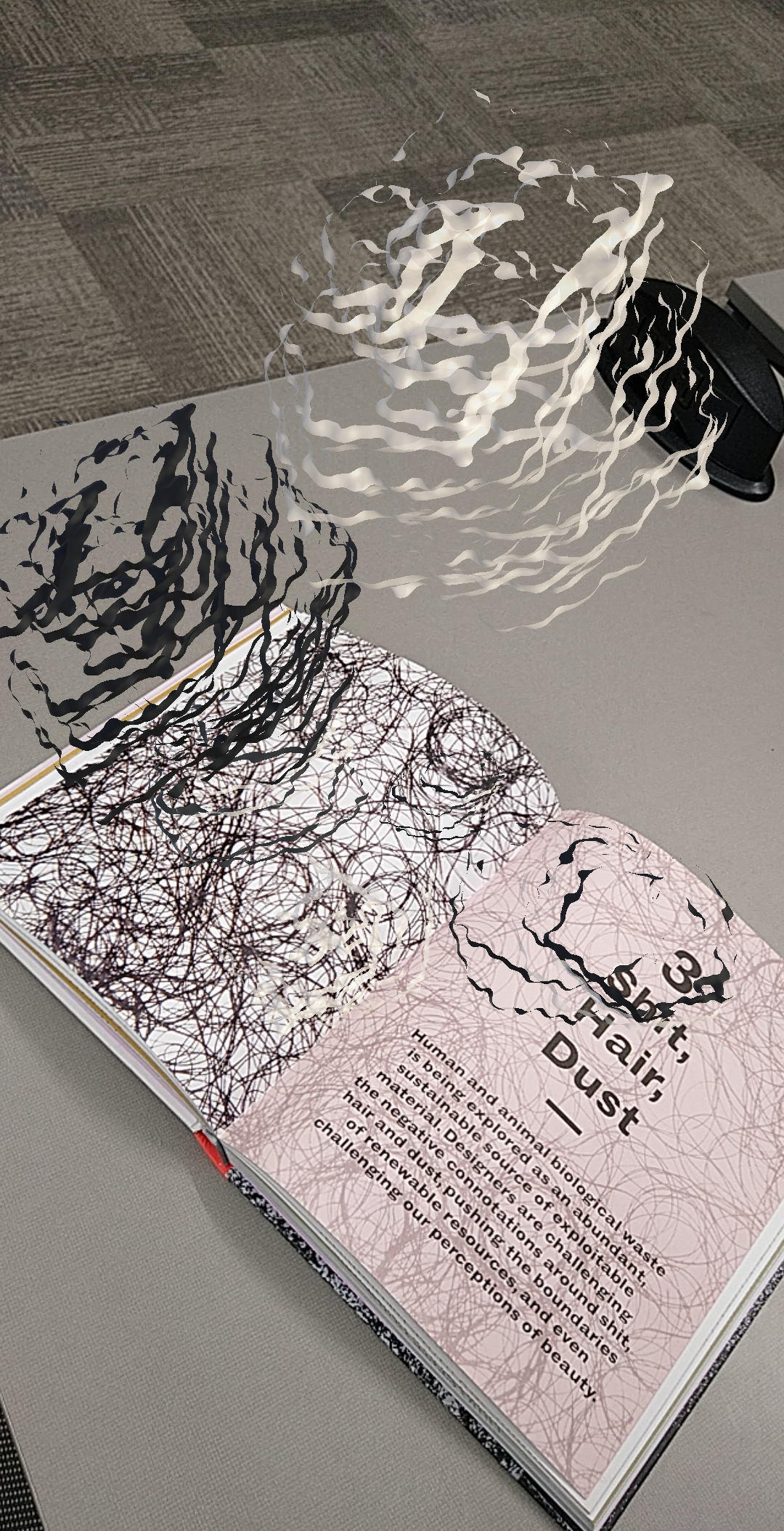
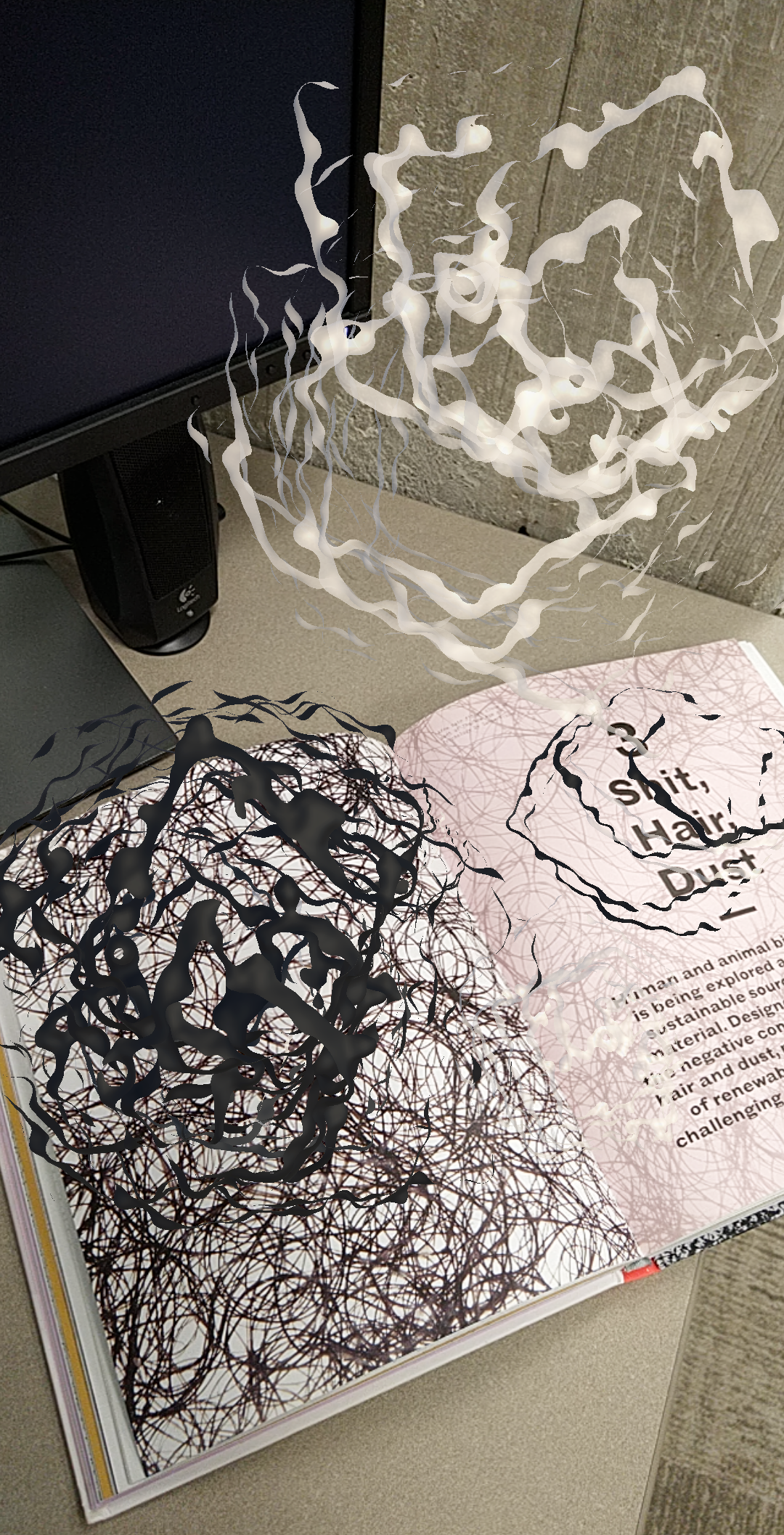

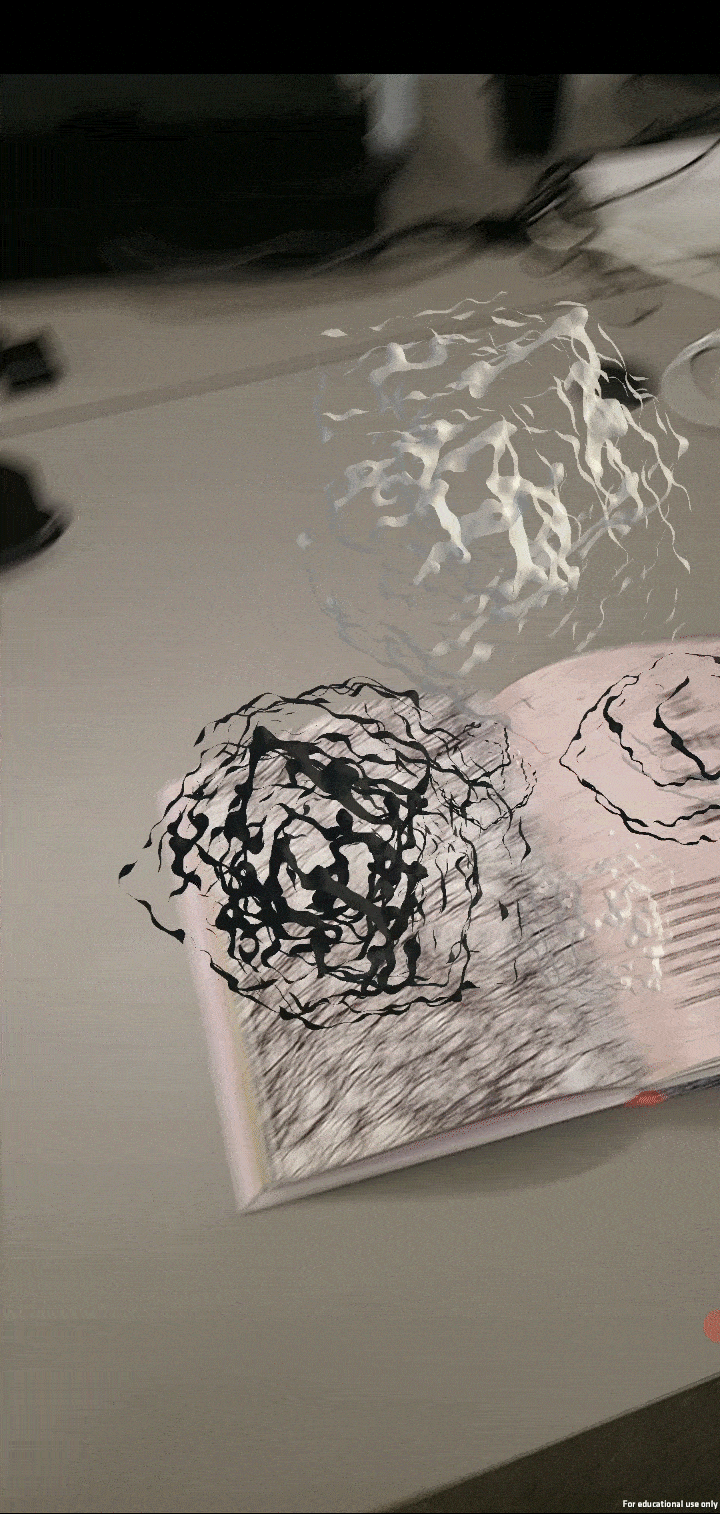
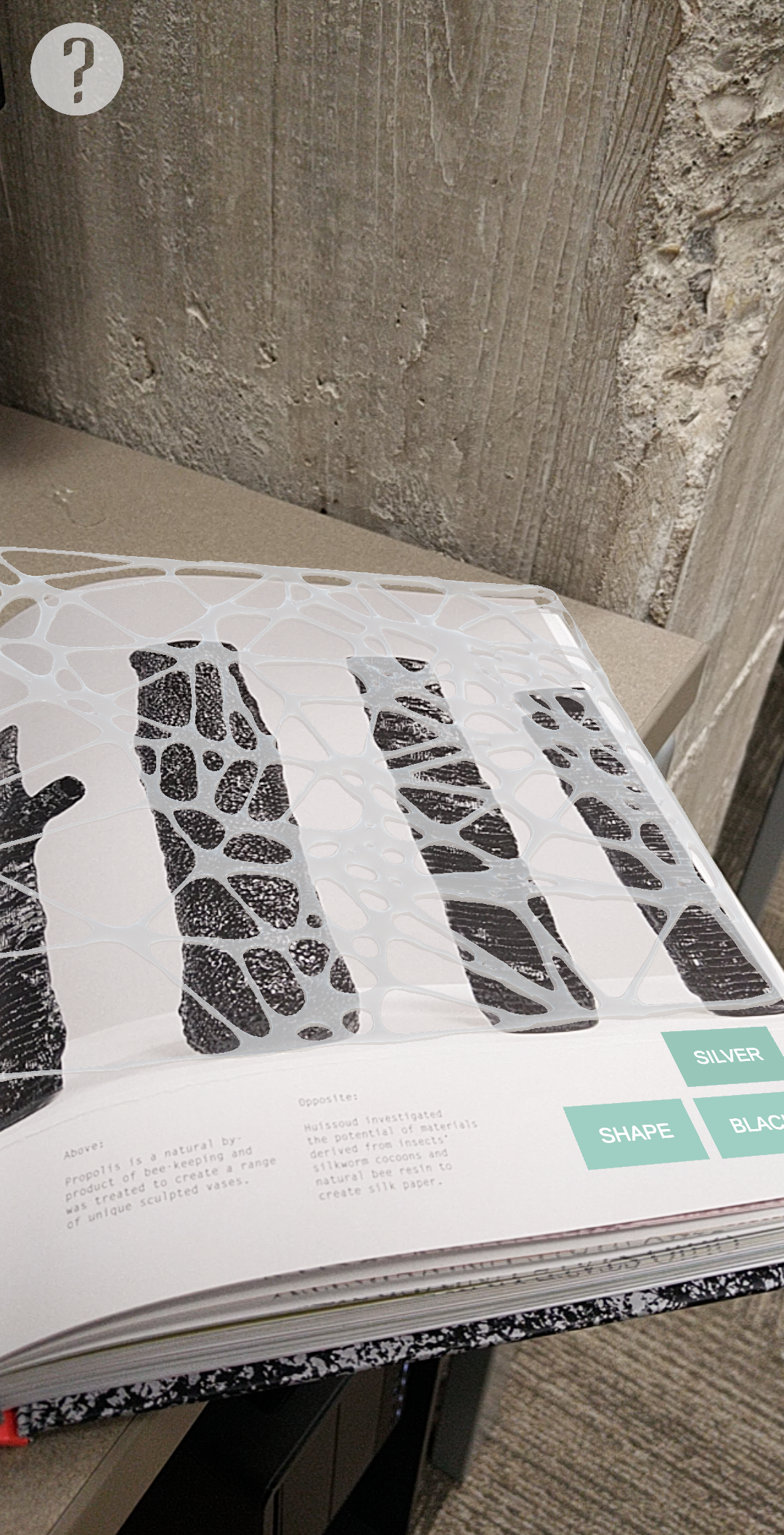
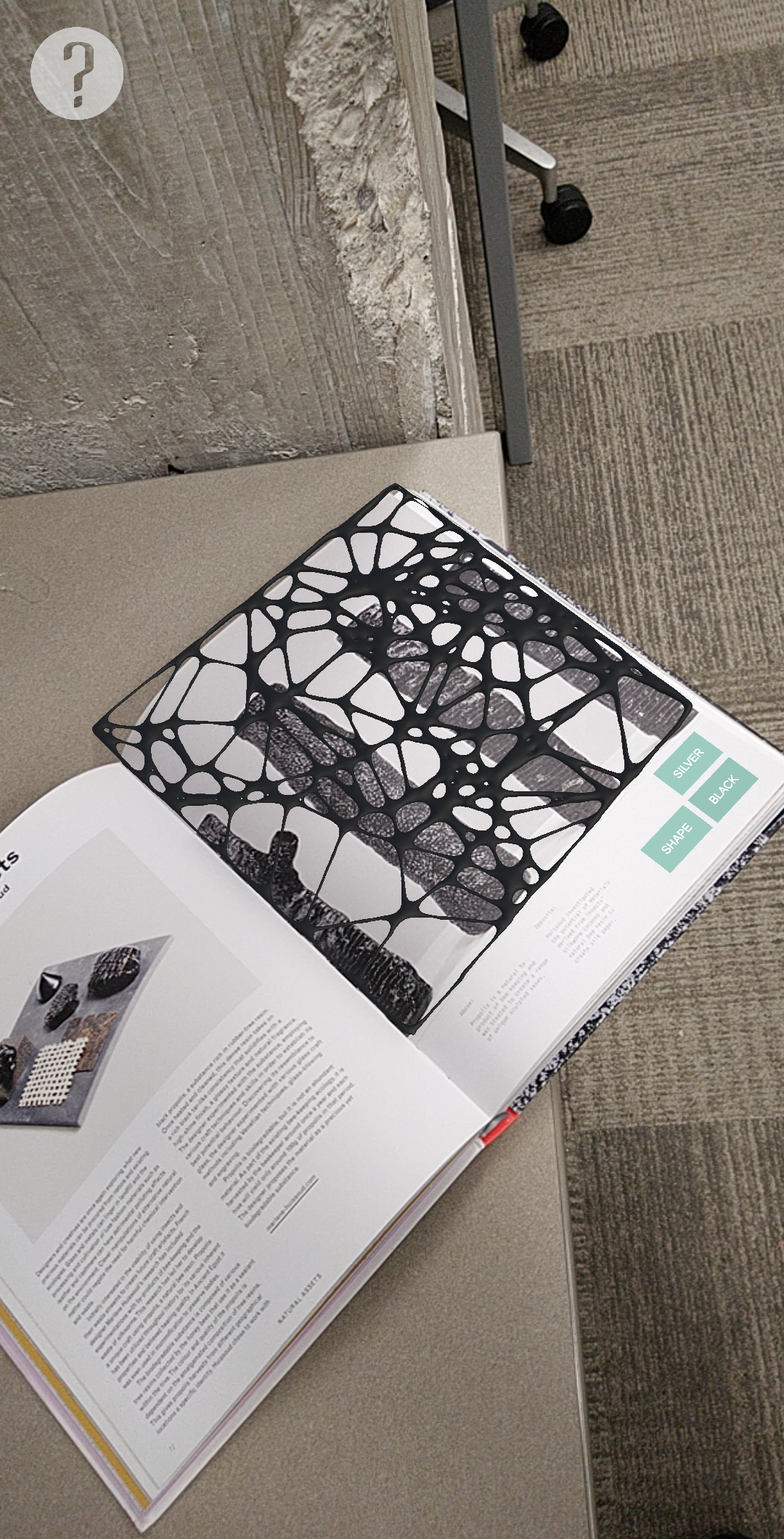
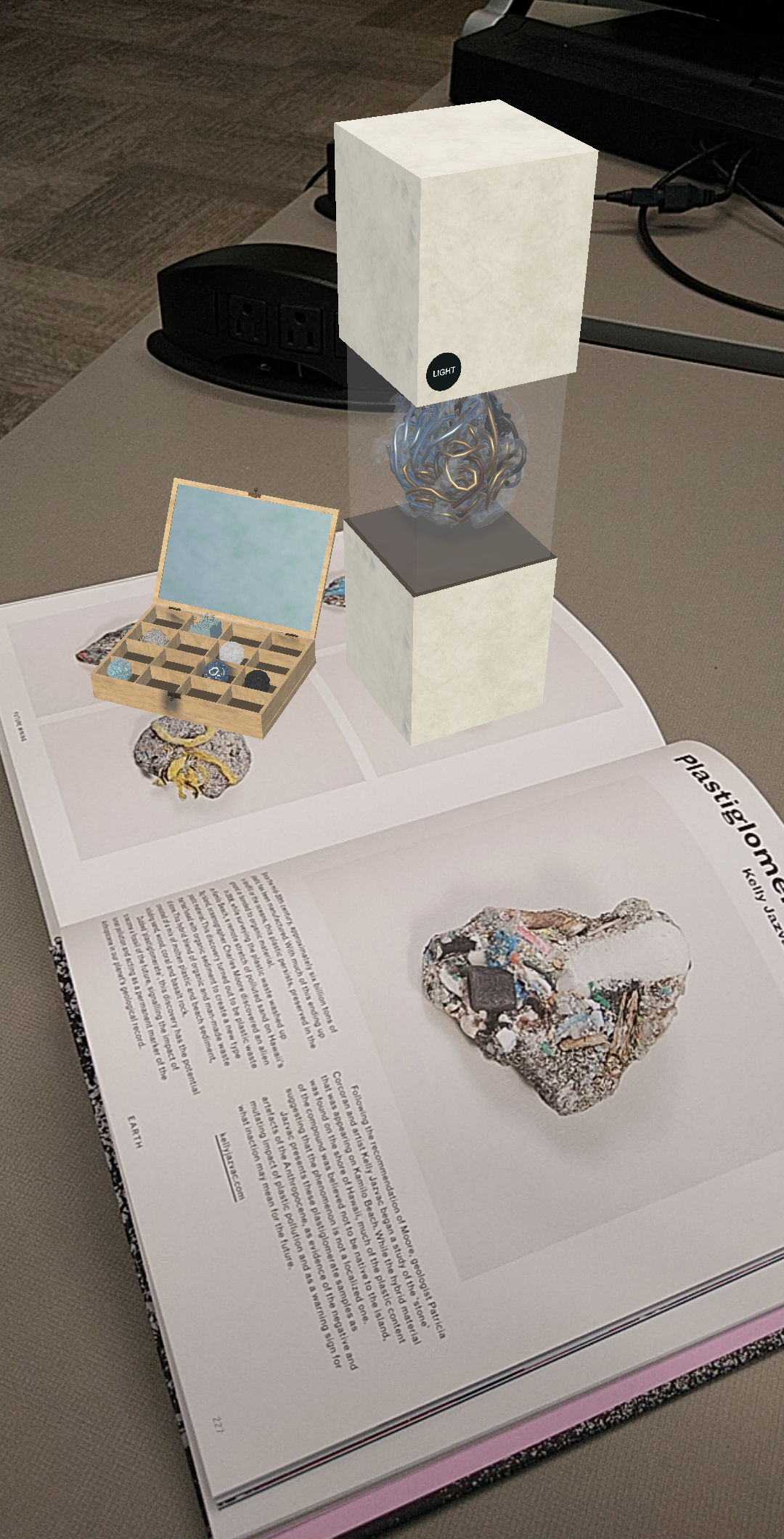
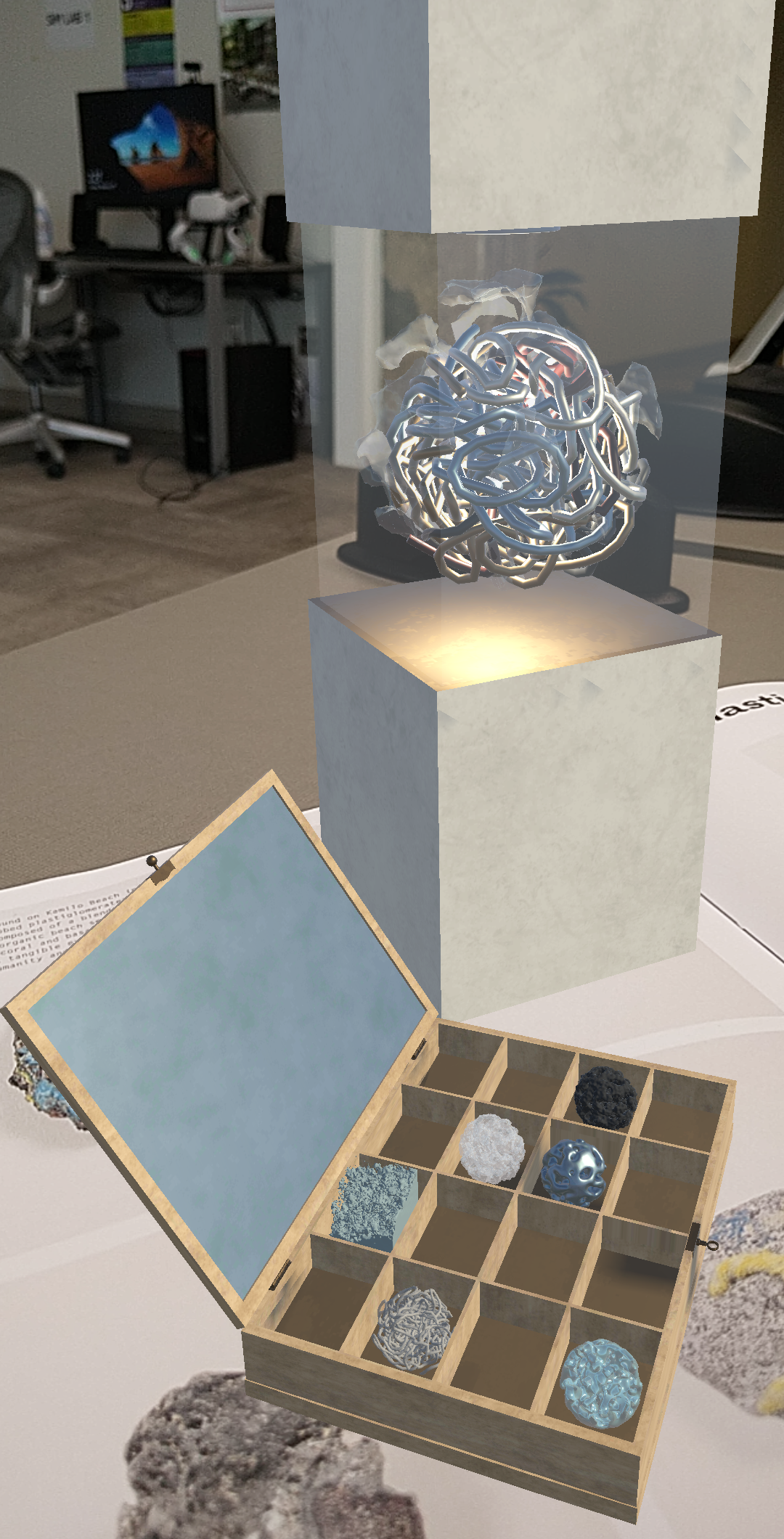
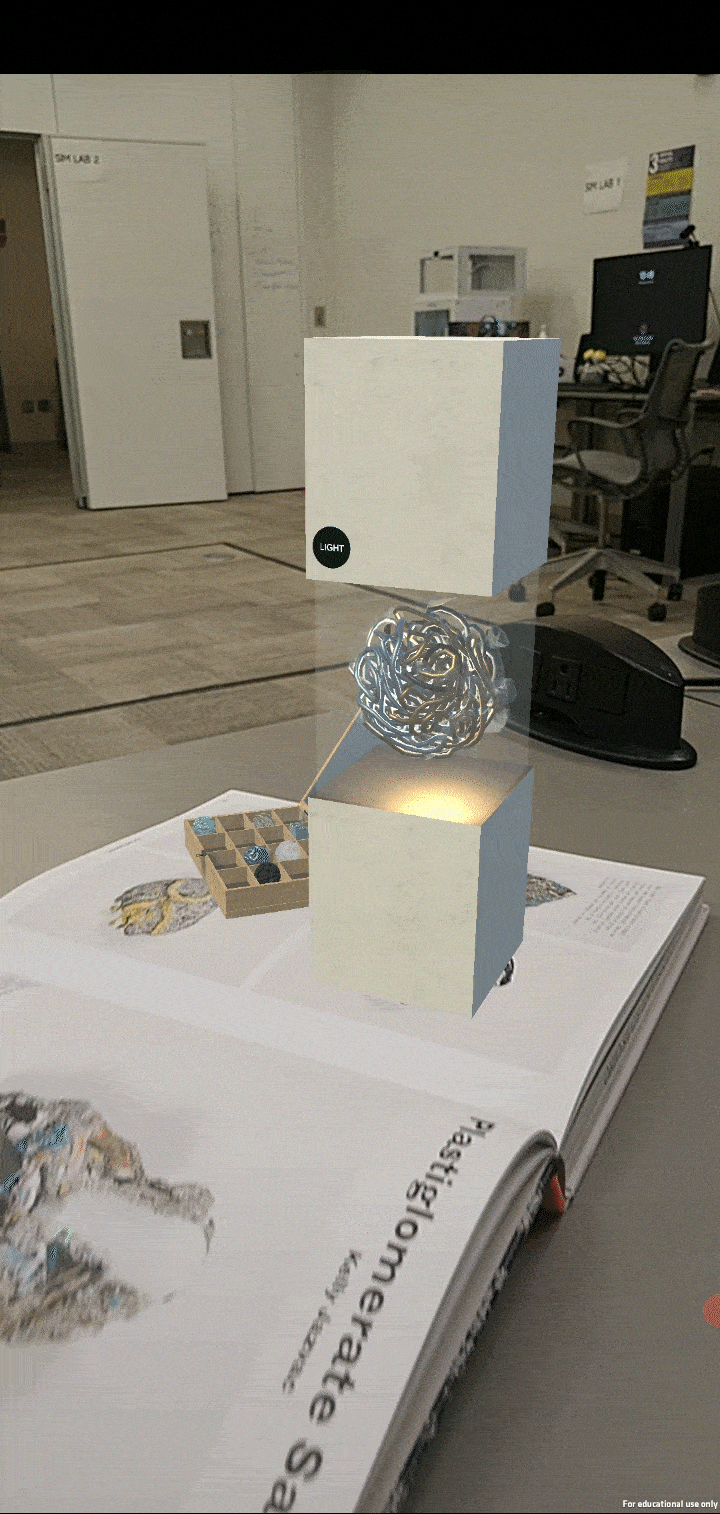
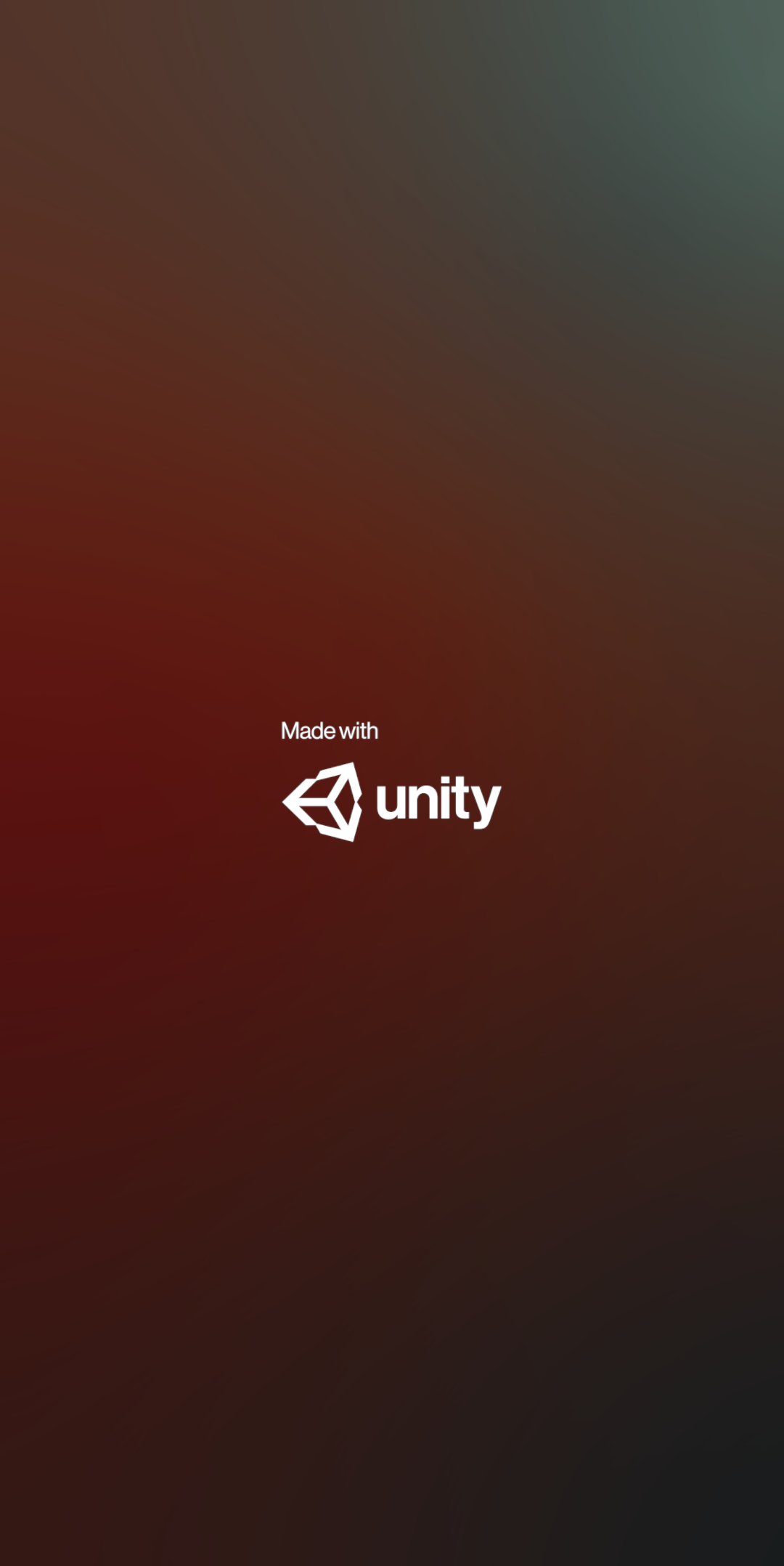
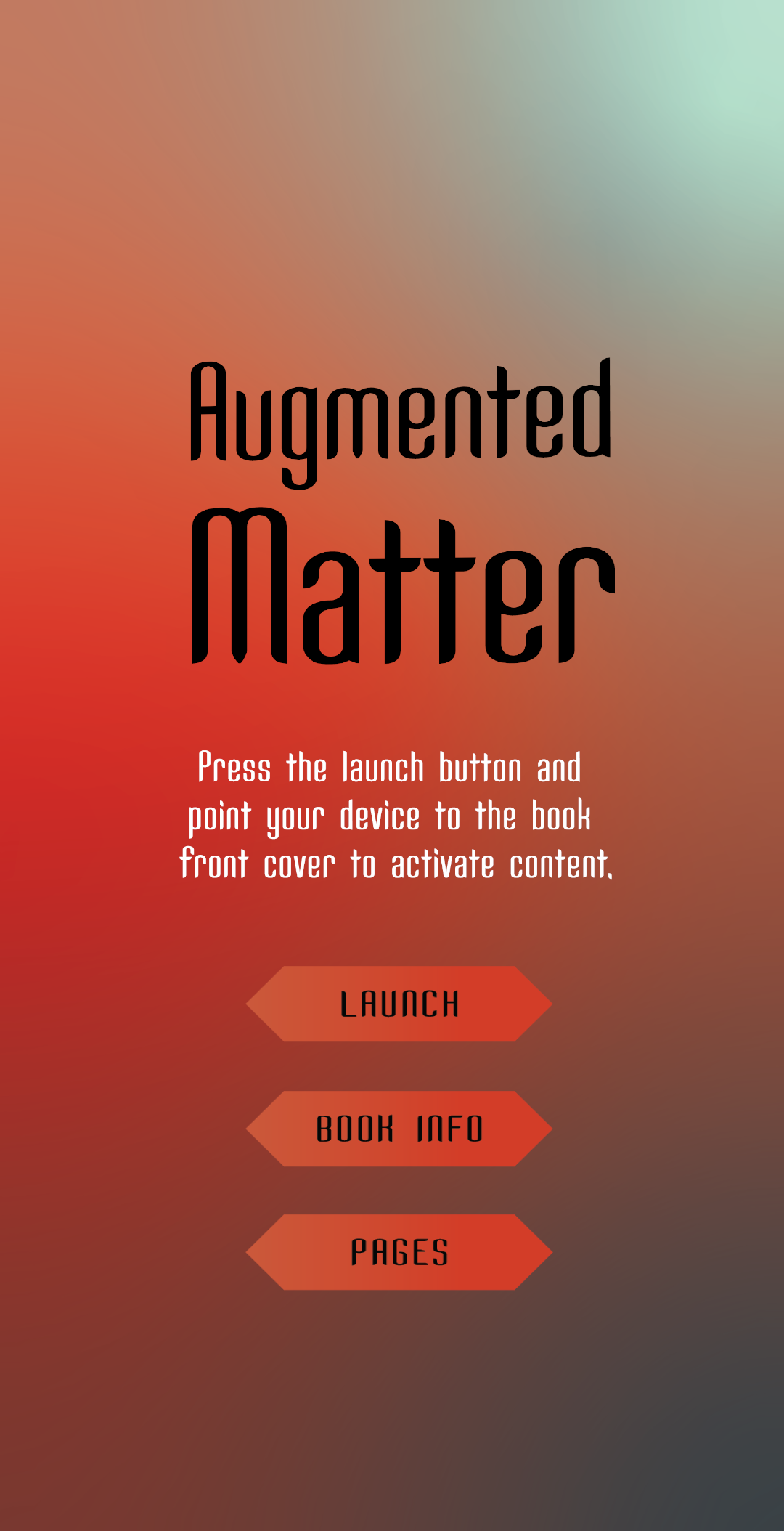
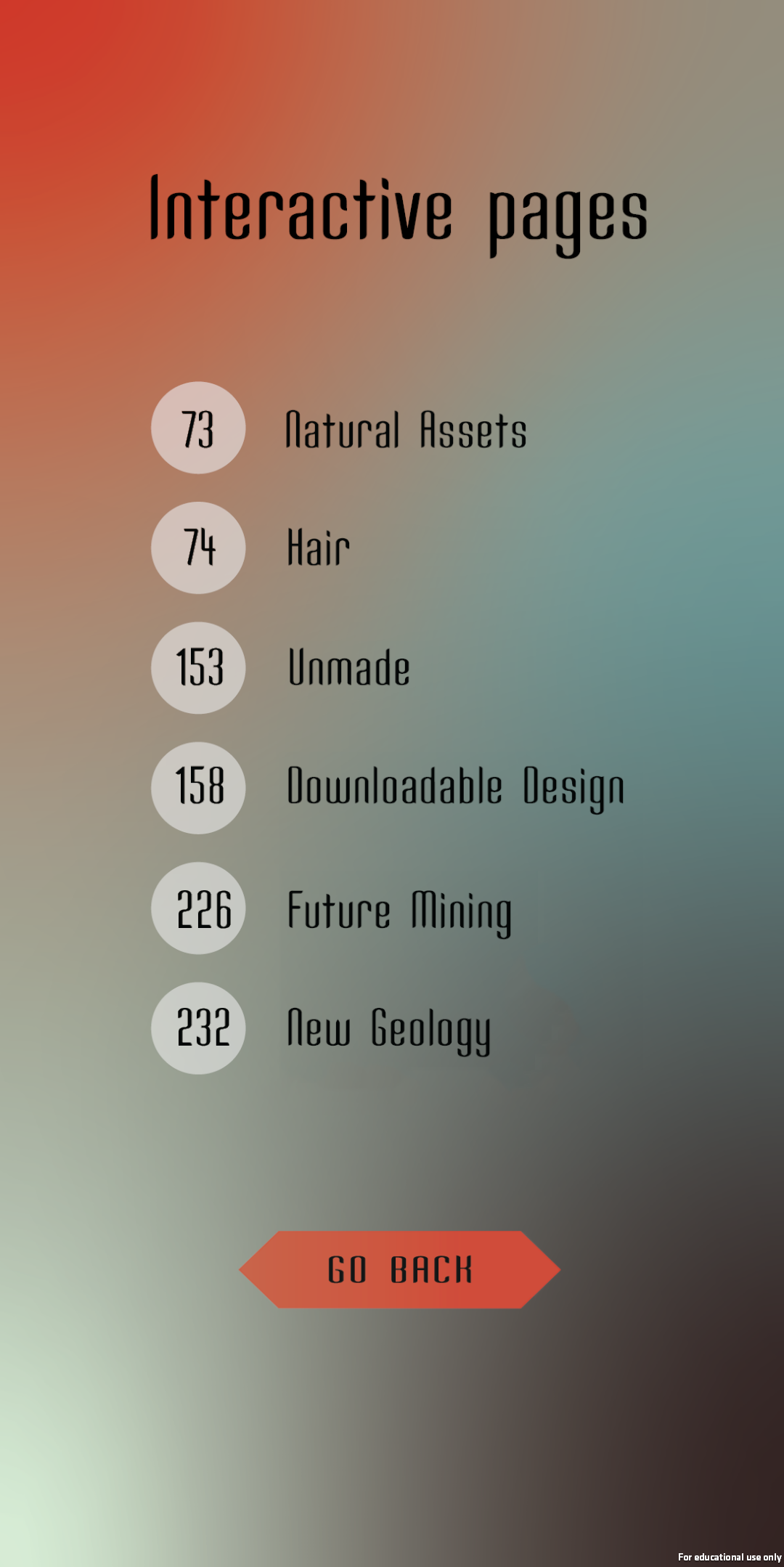
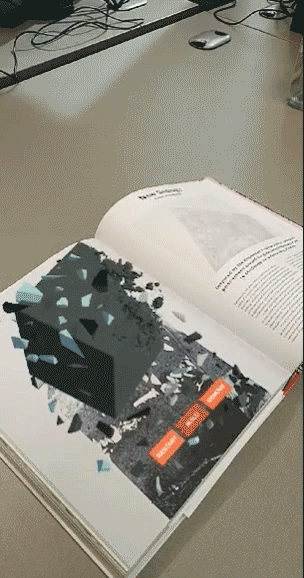
My design process relied on reading and understanding the content on the chosen pages and thinking of interesting ways to represent it in AR in a more abstract way, with the intention of sparking curiosity and encouraging users to read about the content to make sense of the AR elements. I modeled assets based on the products and materials discussed in the book like the Well Proven Chair, and I utilized them to provide an augmented reading experience where readers can use their phones to visualize the materials in 3D and imagine potential creations with them. Some of the pages also feature interactive objects that when clicked, take the user to the website where they can learn more about the content they are reading about. The readers can also interact with objects using the world-space buttons. Some objects are touch-enabled, so the users can move and rotate them.
